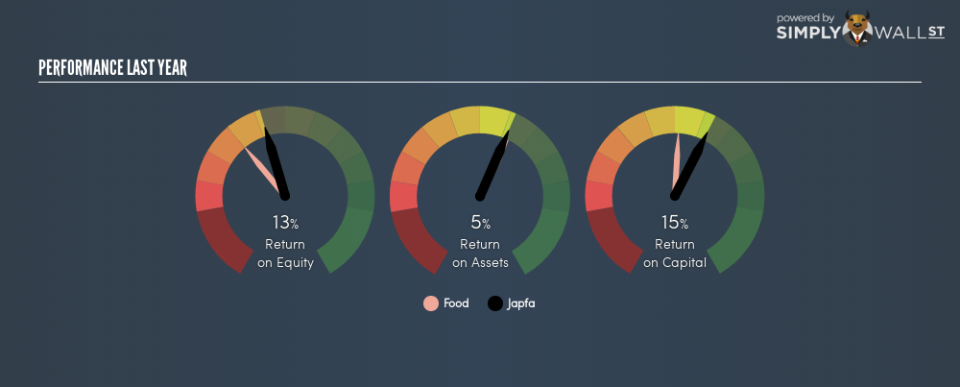Here’s What Japfa Ltd.’s (SGX:UD2) ROCE Can Tell Us

Today we’ll evaluate Japfa Ltd. (SGX:UD2) to determine whether it could have potential as an investment idea. Specifically, we’re going to calculate its Return On Capital Employed (ROCE), in the hopes of getting some insight into the business.
First up, we’ll look at what ROCE is and how we calculate it. Next, we’ll compare it to others in its industry. Then we’ll determine how its current liabilities are affecting its ROCE.
What is Return On Capital Employed (ROCE)?
ROCE measures the amount of pre-tax profits a company can generate from the capital employed in its business. In general, businesses with a higher ROCE are usually better quality. Overall, it is a valuable metric that has its flaws. Renowned investment researcher Michael Mauboussin has suggested that a high ROCE can indicate that ‘one dollar invested in the company generates value of more than one dollar’.
So, How Do We Calculate ROCE?
Analysts use this formula to calculate return on capital employed:
Return on Capital Employed = Earnings Before Interest and Tax (EBIT) ÷ (Total Assets – Current Liabilities)
Or for Japfa:
0.15 = US$182m ÷ (US$2.7b – US$772m) (Based on the trailing twelve months to September 2018.)
Therefore, Japfa has an ROCE of 15%.
See our latest analysis for Japfa
Does Japfa Have A Good ROCE?
ROCE can be useful when making comparisons, such as between similar companies. Using our data, we find that Japfa’s ROCE is meaningfully better than the 7.6% average in the Food industry. We consider this a positive sign, because it suggests it uses capital more efficiently than similar companies. Regardless of where Japfa sits next to its industry, its ROCE in absolute terms appears satisfactory, and this company could be worth a closer look.
It is important to remember that ROCE shows past performance, and is not necessarily predictive. Companies in cyclical industries can be difficult to understand using ROCE, as returns typically look high during boom times, and low during busts. ROCE is only a point-in-time measure. Future performance is what matters, and you can see analyst predictions in our free report on analyst forecasts for the company.
What Are Current Liabilities, And How Do They Affect Japfa’s ROCE?
Current liabilities are short term bills and invoices that need to be paid in 12 months or less. The ROCE equation subtracts current liabilities from capital employed, so a company with a lot of current liabilities appears to have less capital employed, and a higher ROCE than otherwise. To counteract this, we check if a company has high current liabilities, relative to its total assets.
Japfa has total liabilities of US$772m and total assets of US$2.7b. As a result, its current liabilities are equal to approximately 28% of its total assets. A fairly low level of current liabilities is not influencing the ROCE too much.
Our Take On Japfa’s ROCE
Overall, Japfa has a decent ROCE and could be worthy of further research. You might be able to find a better buy than Japfa. If you want a selection of possible winners, check out this free list of interesting companies that trade on a P/E below 20 (but have proven they can grow earnings).
For those who like to find winning investments this free list of growing companies with recent insider purchasing, could be just the ticket.
To help readers see past the short term volatility of the financial market, we aim to bring you a long-term focused research analysis purely driven by fundamental data. Note that our analysis does not factor in the latest price-sensitive company announcements.
The author is an independent contributor and at the time of publication had no position in the stocks mentioned. For errors that warrant correction please contact the editor at editorial-team@simplywallst.com.

